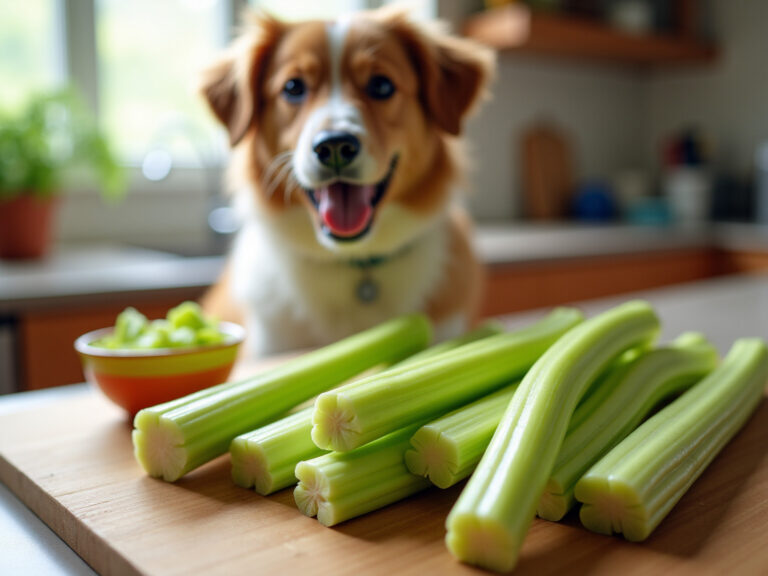4 Essential Steps to Care for Your Brindle Dog
Overview
Caring for your brindle dog involves essential steps that nurture their well-being. Start by establishing a structured care routine—this is crucial for your furry family member’s happiness. Promoting socialization and mental stimulation is equally important; these activities not only keep them engaged but also enrich their lives. Additionally, monitoring health for breed-specific concerns ensures your dog remains vibrant and healthy.
At Adventure Den, we understand how much your pet means to you. A consistent routine, paired with regular veterinary check-ups, significantly enhances the well-being of brindle dogs. Engaging activities foster joy and companionship, allowing them to thrive as beloved family companions. Remember, your commitment to their care creates a nurturing environment where they can flourish. Let’s work together to ensure that your brindle dog enjoys a fulfilling and happy life.
Introduction
Brindle dogs, with their captivating coat patterns and vibrant personalities, have truly won the hearts of many pet owners. Characterized by their dark stripes over a lighter base, these dogs are not just visually striking; they are also celebrated for their intelligence and affectionate nature, making them wonderful companions for your furry family members. However, understanding the unique traits of brindle breeds is essential, as they come with specific care requirements and potential health concerns that every owner should be aware of.
From establishing a structured daily routine to promoting socialization and mental stimulation, the journey of caring for a brindle dog is both rewarding and vital for their well-being. This article explores the characteristics, care routines, socialization strategies, and health monitoring tips necessary to ensure these beloved pets lead happy, healthy lives. Join us in nurturing your brindle companion and creating a loving environment that they deserve.
Understand Brindle Dog Characteristics
Brindle dogs are truly captivating, featuring striking coat patterns that showcase dark stripes over a lighter base color. This unique appearance is found in beloved breeds such as Boxers, Bulldogs, and Greyhounds. Beyond their looks, brindle dogs are often celebrated for their energetic nature and intelligence, making them not just loyal companions but also adaptable to various living environments. Many brindle dogs display affectionate behaviors, which only adds to their charm as family companions; however, it’s important to be aware of potential wellness predispositions linked to specific breeds of brindle dogs.
For instance, brachycephalic breeds like Bulldogs may encounter respiratory challenges, while others could be prone to hip dysplasia. Understanding these common wellness concerns can significantly enhance the quality of care you provide. A case study on prevalent medical conditions in Greyhounds underscores the importance of being informed about particular issues such as:
- Gum disease
- Spine and neck problems
- Arthritis
- Corns
- Osteosarcoma
All of which can affect their overall well-being.
Additionally, Greyhounds shed moderately throughout the year, with increased shedding during the spring and autumn months. This is an essential consideration for families looking to welcome these loving pets into their homes. They thrive on companionship and should not be left alone for extended periods, highlighting their need for connection and attention.
Veterinarians emphasize the significance of recognizing these characteristics and risks to ensure a joyful and thriving life for these dogs. By becoming familiar with the traits and possible medical concerns of brindle dogs, you can tailor your care strategy to meet their specific needs, ultimately enhancing their quality of life. Your furry family members deserve the best, and understanding their requirements is the first step towards providing a nurturing environment.
Establish a Care Routine for Your Brindle Dog
Establishing a structured care routine for your furry family member is vital for their overall well-being. Begin by setting specific times for feeding, walks, and play. A typical daily schedule might look like this:
- Feeding: Provide high-quality dog food twice a day, adjusting portions according to your dog’s age, weight, and activity level. This helps maintain a healthy weight, as studies show that 32% of pet owners acknowledge their role in their pet’s obesity.
- Exercise: Ensure your dog gets at least 30-60 minutes of physical activity each day. This can include walks, playtime in the yard, or visits to the dog park, which are crucial for their physical and mental health.
- Grooming: Depending on the specific breed, dogs with a striped pattern may need regular brushing to manage shedding and keep their coat healthy. Schedule grooming sessions weekly to maintain their appearance and comfort.
- Training: Incorporate short training sessions into your daily routine to reinforce good behavior and provide mental stimulation. Aim for 5-10 minutes of training after each walk, as expert opinions highlight the importance of routine in fostering a well-behaved pet.
By maintaining a consistent routine, you not only help your dog feel secure but also enhance the happiness and overall quality of life of your brindle dog. This organized method is supported by case studies demonstrating that effective dog care routines result in healthier and more satisfied animals. As Susan Meyer, Senior Editorial Manager, notes, “Nearly all (about 99%) of all shelter animals are healthy enough to be adopted,” underscoring the importance of responsible pet ownership. Furthermore, the case study on pet abandonment trends post-pandemic indicates that maintaining a stable care routine can prevent rehoming, reinforcing the need for consistent care. The emotional and psychological advantages of animal companionship are widely recognized, making a structured care routine essential for both pets and their loving owners.
Promote Socialization and Mental Stimulation
To nurture your brindle dog’s socialization and mental stimulation, consider these compassionate strategies:
Socialization: It’s essential to introduce your brindle dog to a variety of people, pets, and environments from an early age. Organizing playdates with other pets and visiting parks will help your dog learn appropriate social behaviors. At Adventure Den, our daycare services provide supervised playdates, ensuring safe and engaging interactions with fellow dogs.
- Enrichment Activities: Keep your dog’s mind sharp by engaging them with puzzle toys, interactive games, and training exercises that challenge their intellect. Activities like hide-and-seek or scent games can be particularly stimulating and rewarding. Adventure Den offers a variety of enrichment activities, including interactive games and training sessions, designed to keep your dog mentally engaged and happy.
- Group Classes: Enrolling your dog in obedience or agility classes not only provides training but also fosters social interaction with other animals and people. Adventure Den hosts group classes that promote socialization and skill development in a fun, nurturing environment, which is perfect for your brindle dog.
Daily Adventures: Take your brindle dog on new walking routes or to different parks to expose them to a rich tapestry of sights, sounds, and smells, making their world more interesting and engaging. By prioritizing socialization and mental stimulation, and utilizing the loving services at Adventure Den, you contribute significantly to your brindle dog’s overall happiness and well-being.
Monitor Health and Address Common Concerns
To effectively monitor your brindle dog’s health, it’s essential to follow these caring guidelines:
- Regular Vet Check-ups: Schedule annual veterinary visits for vaccinations, dental care, and comprehensive health assessments. Addressing any breed-specific wellness issues is crucial, as wellness issues may be common in brindle dogs due to their predisposition to certain conditions. Remember, regular check-ups are vital for the early identification of medical concerns.
- Watch for Symptoms: Stay vigilant for signs of common medical issues. For example, limping could indicate hip dysplasia, while coughing may signal respiratory problems. Additionally, observe any changes in appetite or energy levels, as these can be early indicators of underlying health concerns.
- Maintain a Healthy Weight: Obesity can exacerbate various medical problems. Regularly monitor your dog’s weight and adjust their diet and exercise routine accordingly. Evidence-based therapeutic diets are often recommended as a first-line treatment for managing excess fat in pets. Dr. Kirsten Graham emphasizes, “If you are worried that your dog might be over- or underweight, consult your veterinary care team; even at a healthy weight, routine check-ups are essential for dogs involved in extreme sports.”
- Grooming and Skin Care: Regular grooming is key to preventing skin issues. During grooming sessions, look for any unusual lumps, bumps, or irritations, as these can signal problems that need veterinary attention.
- Feeding Containers: Consider using containers for weekly food allotments to simplify feeding routines and help maintain a healthy weight.
By proactively addressing these wellness tips, you can help ensure your brindle dog enjoys a happy and fulfilling life, minimizing the risk of common medical issues associated with brindle dogs. Understanding the variability in brindle patterns can also enhance your appreciation of your furry family member’s unique health monitoring needs.
Conclusion
Caring for brindle dogs, those unique furry family members with their captivating coat patterns and engaging personalities, requires a dedicated approach to ensure they thrive. It’s essential for pet owners to understand their distinctive traits, including their energetic nature and potential health predispositions. By familiarizing yourself with the specific needs of brindle breeds, such as the importance of regular veterinary check-ups and awareness of common health issues, you can significantly enhance your pet’s quality of life.
Establishing a structured care routine is equally vital. Consistent feeding schedules, daily exercise, grooming, and training not only foster a sense of security for your brindle dog but also contribute to their overall happiness and well-being. A well-planned routine helps prevent common problems, including obesity and behavioral issues, ensuring that these beloved companions remain healthy and content.
Socialization and mental stimulation are crucial components of your brindle dog’s development. Engaging them in various activities, from playdates to obedience classes, nurtures their social skills and keeps their minds sharp. By actively promoting these experiences, you create a rich and fulfilling environment that supports both their emotional and psychological needs.
In summary, caring for a brindle dog involves a comprehensive approach that includes understanding their unique traits, establishing a solid care routine, and prioritizing socialization and mental stimulation. By committing to these nurturing practices, you can ensure that your brindle companions lead happy, healthy lives, filled with love and companionship.
Frequently Asked Questions
What are brindle dogs known for?
Brindle dogs are known for their striking coat patterns, featuring dark stripes over a lighter base color. They are also celebrated for their energetic nature, intelligence, and affectionate behaviors.
Which dog breeds commonly have brindle coats?
Common dog breeds that feature brindle coats include Boxers, Bulldogs, and Greyhounds.
What are some health concerns associated with brindle dogs?
Brindle dogs may have specific health concerns depending on their breed. For example, brachycephalic breeds like Bulldogs may face respiratory challenges, while others might be prone to hip dysplasia.
What common medical conditions are prevalent in Greyhounds?
Common medical conditions in Greyhounds include gum disease, spine and neck problems, arthritis, corns, and osteosarcoma.
How much do Greyhounds shed, and when?
Greyhounds shed moderately throughout the year, with increased shedding occurring during the spring and autumn months.
Do brindle dogs require companionship?
Yes, brindle dogs thrive on companionship and should not be left alone for extended periods, as they need connection and attention.
Why is it important to understand the characteristics and health risks of brindle dogs?
Understanding the traits and possible medical concerns of brindle dogs allows owners to tailor their care strategies to meet the dogs’ specific needs, ultimately enhancing their quality of life.







